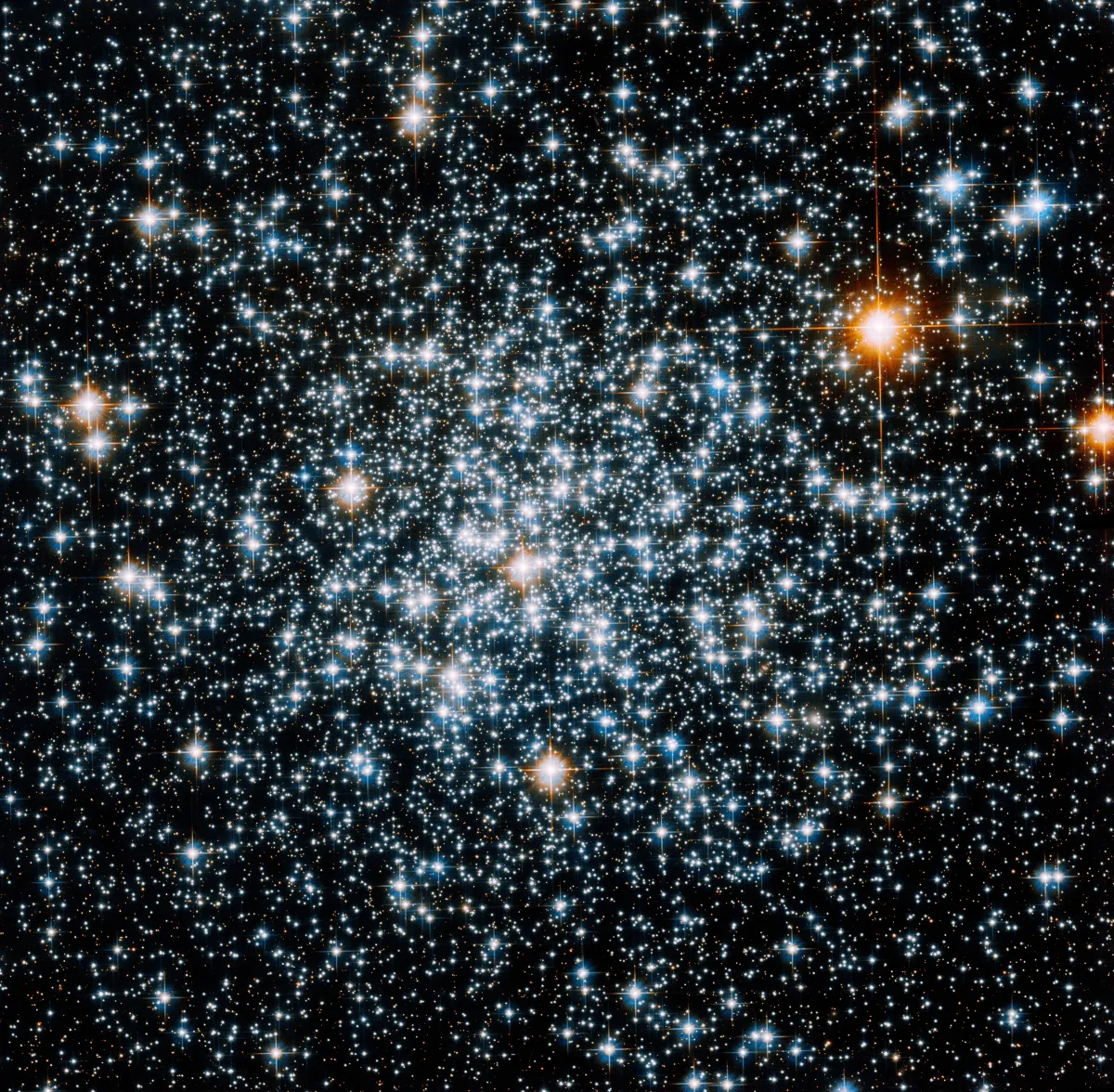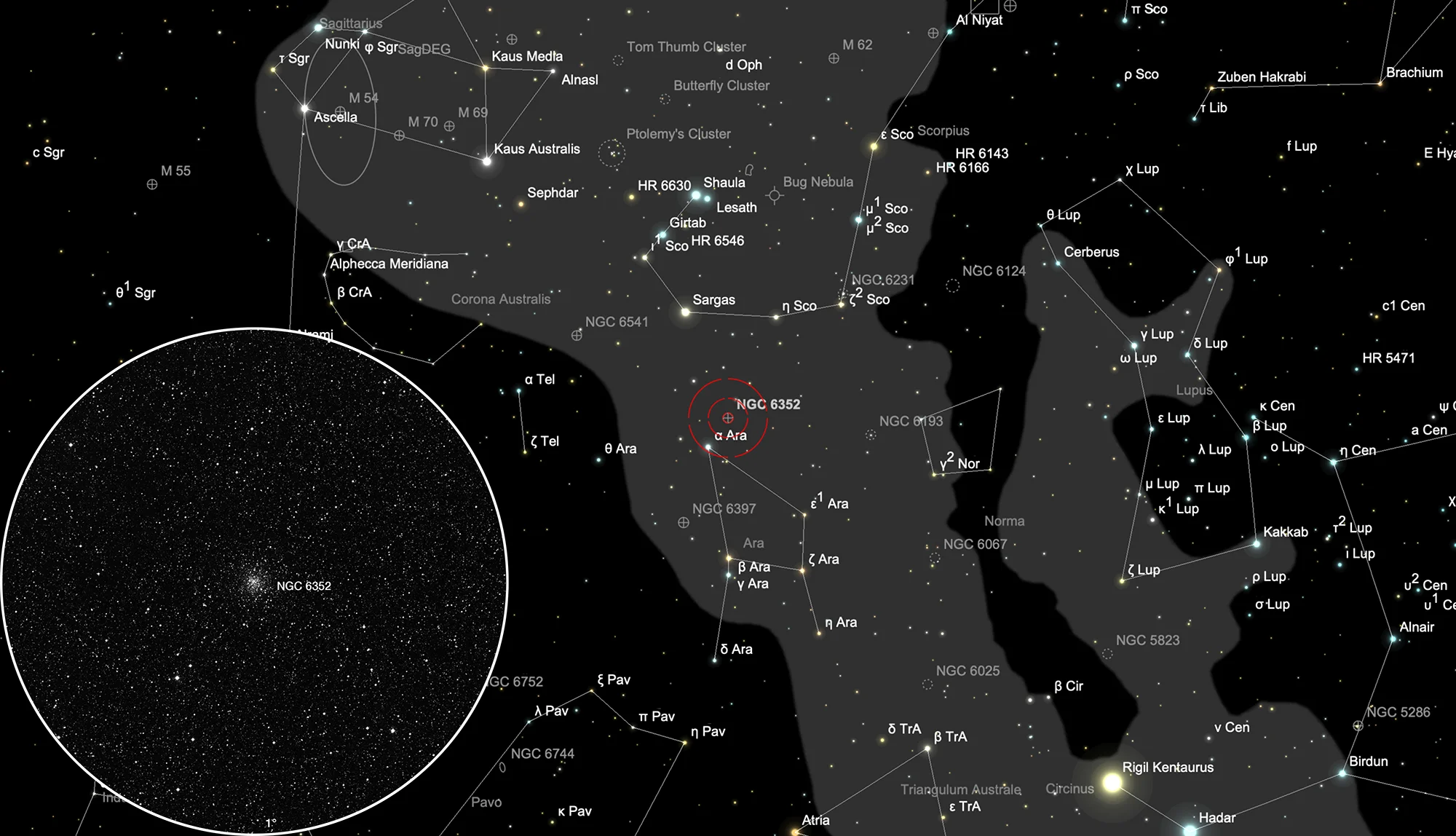Globular Cluster NGC 6352

History
This globular cluster was discovered by Scottish astronomer James Dunlop on 14 May 1826. He observed it using his selfmade 9-inch reflector from Paramatta NSW, Australia. He listed it as Δ 417 and after six observations he described it as follows: «A rather faint nebula, of an irregular round figure, 4' diameter, slightly branched; easily resolvable into stars, with slight compression of the stars to the centre.» [50]
John Herschel missed this globular cluster from South Africa, hence it has no designation in his General Catalogue. Edward E. Barnard independently found it on 7 July 1885. He assumed it was new, since it was missing from the General Catalogue. Lewis Swift informed him of Dunlop's prior discovery. [364]
Physical Properties
| Designation | NGC 6352 |
| Type | GCL (XI) |
| Right Ascension (J2000.0) | 17h 25m 29.2s |
| Declination (J2000.0) | -48° 25' 20" |
| Diameter | 9 arcmin |
| Visual magnitude | 7.8 mag |
| Metric Distance | 5.600 kpc |
| Dreyer Description | pF, L |
| Identification, Remarks | GCL 64; ESO 228-SC3 |
Finder Chart
The globular cluster NGC 6352 is located in the constellation Ara. Unfortunately it is not visible from Europe. On 14 June it in opposition with the Sun and is therefore highest in the sky at local midnight.
